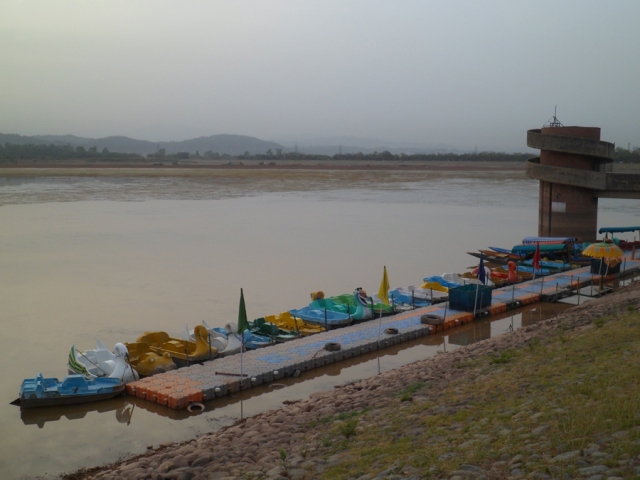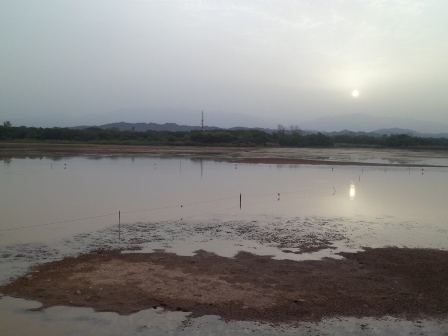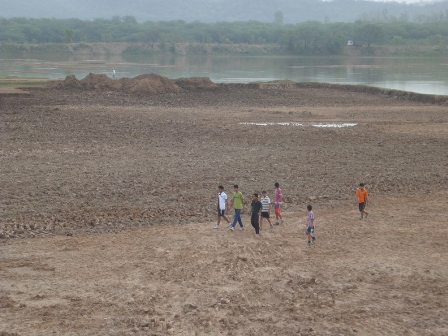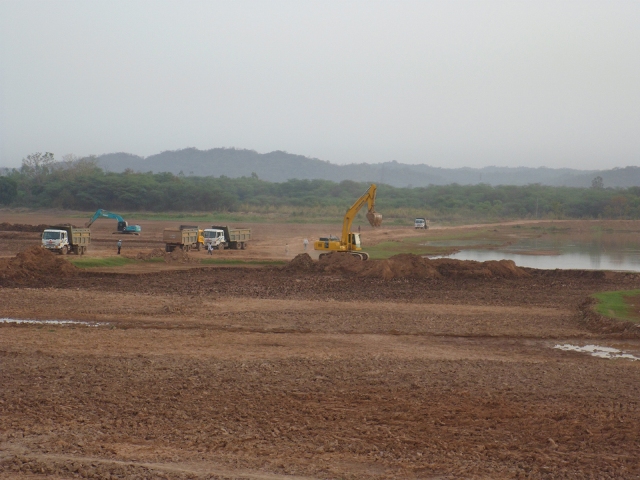
Chandigarh’s famous Sukhna Lake, the most-visited tourist spot in the ‘City Beautiful’, is gasping for breath and attention.
Built in 1958, huge areas of the lake’s underbelly have shown up in recent weeks. The dried-up bed of the lake, which has the picturesque lower Shivalik range (Kasauli hills) of the Himalayas in the backdrop, has become an eyesore for tourists and regular visitors.
With the lake not getting enough water during the monsoon last year, over 50 percent of the lake is now a dried bed. Scores of islands have sprung up all over the water body.
Boating, a popular recreation for visitors to the lake, has been affected with the authorities forced to shift the boarding jetties from their original position to a new location where there is still water available. People hiring the boats are instructed to do so in a restricted area.

Given the limitation of water available for boating, authorities of the Chandigarh Industrial and Tourism Development Organisation (CITCO) are unable to offer the 100-plus boats for hire.
“The lake did not get enough water in the past year. We are trying to manage the boating activity in whatever water is available in the present circumstances. With the current level of heat wave and no rains, the remaining water in the lake will also dry up in the next few days,” a CITCO official, who did not want to be named said.
The plight of the dried-up lake is such that the Chandigarh Administration’s engineering department has started mechanical de-silting right in the middle of the lake bed (around the 1,500 metre point of the 3,000-metre embankment).
Heavy machinery, including excavators, dumpers and trucks can be seen plying on the dry lake bed from early morning till evening — trying to de-silt as much of the bare bed of the lake before the lake gets filled again.

Experts blame the apathy of the administration and lack of planning that has brought the lake to this point.
“Nearly two decades ago, the issue of silt filling up the lake was raised. In a knee-jerk reaction, the administration carried out extensive plantation activity in the lake’s catchment area,” says leading ecologist and professor of Panjab University’s Botany Department R.K. Kohli.
“The trees that were planted were too dense. There was no ecological auditing of this plantation. This was an impulsive action which has led to the present situation,” he said.
Kohli said the plantation and the check dams built in the lake’s catchment area in the last two to three decades to stop the silt inflow had severely affected the water inflow to the lake.
“The check dams and the unauthorised construction in the catchment area of the lake have stopped the normal water flow to the lake,” an officer of the Chandigarh engineering department said on condition of anonymity.
Just before drying up this summer, the lake was severely affected by uncontrolled growth of weeds. With the water level going down, the weeds also multiplied.
“First it was weeds and now the dry bed. Rowing has become an activity of the past at Sukhna lake. It should be named a ‘sookhna’ (drying up) lake,” a rowing trainee from Punjab said.

Satirist and actor Jaspal Bhatti, who led his Nonsense Club members on the dry bed of the lake in the early 1980s to hold a symbolic cricket match to highlight the plight of the lake, said he was shocked that no lessons had been learnt to save the lake.
“With a huge dried bed of the lake showing up this time, the authorities should hold the next T20 cricket matches on the lake bed. This will generate revenue. Even spectators can be accommodated on the dried lake bed. In fact, two-three matches can be held simultaneously,” Bhatti says in his typical satirical style.
“The lake is an eyesore now. The dried bed area stinks. The administration is not really bothered,” said Raj Kumar, a morning walker at the lake for over three decades.
The Sukhna Lake, conceptualised and designed by the city’s founder-architect Le Corbusier, was originally spread in a three square kilometre area.
One-third of the lake has already been lost to silting. The water-holding volume of the lake has also depleted to less than half. From an original depth of over 20 feet, most areas of the lake have a depth of only three-six feet.
The opinions, beliefs and viewpoints expressed by authors, news service providers on this page do not necessarily reflect the opinions, beliefs and viewpoints of Hill Post. Any views or opinions are not intended to malign any religion, ethnic group, club, organization, company, or individual.
Hill Post makes no representations as to the accuracy or completeness of any information on this site page.



